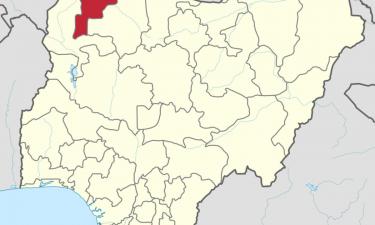High-speed commuter train derails in England, one killed
Investigators on Saturday inspected the wreckage of a high-speed commuter train that derailed in remote countryside in northern England, sending carriages hurtling down an embankment and killing one passenger.
Five other passengers were seriously injured, and investigators said they were surprised there weren't more casualties.
The Glasgow-bound Virgin train, carrying 120 passengers and staff, crashed Friday night near Lambrigg in Cumbria, 270 miles (435 kilometers) northwest of London, in driving rain, the AP says.
Rescue workers searched along muddy country lanes to locate the scene, finding local farmers had arrived ahead of them to help evacuate the injured. Royal Air Force helicopters were scrambled to transport the wounded to hospitals, police said.
"We are amazed that we didn't have more fatalities on the scene _ we have been very fortunate. It is little short of a miracle," said Chief Superintendent Martyn Ripley, of the British Transport Police.
He said an 80-year-old woman had died in hospital as a result of her injuries. Officers were investigating whether the train derailed because of a failure of railroad switches that are used to adjust track settings and alter a train's route, he said. If left in the wrong position, the components can throw carriages off the track.
Virgin founder Sir Richard Branson visited the scene Saturday and said he had returned to Britain from a family holiday after being informed of the accident.
Branson said the train - a new model introduced in 2003 - was "built like a tank" and confirmed the carriages and most windows had remained intact. "If it had been any of the old trains the injuries and fatalities would have been horrendous."
He said driver Ian Black, a former police officer, had attempted to keep the train on the railroad tracks, refusing to abandon his cabin and seek shelter with passengers.
Black, who suffered serious neck injuries, had chosen not to "desert the bridge and deserves a lot of praise for that," Branson said. "He is a definitely a hero. In the sober light of day we will have to see if he can be recognized as such," he said.
Ian Garnett, watch manager with Cumbria Fire and Rescue Service, said rescuers had struggled to find the scene Friday.
Morning light revealed the front two carriages of the Pendolino train, which has a special tilting mechanism that enables it to reach speeds of 125 mph (200 kph), had been hurled off the track and down a verge. Seven other carriages snaked along a banking, with one twisted onto its side.
Cumbria Ambulance Service spokeswoman Claudine Shacklock said at least 77 people were injured. Virgin Trains spokesman Lee West said the train was traveling at 95 mph (153 kph) at the time of the derailment.
Twelve ambulances and five fire trucks responded to the scene, and the Royal Air Force dispatched three Sea King helicopters and two mountain rescue teams.
Vanessa Robinson, 25, from Perth, Australia, said she was thrown from the train through a smashed window when her carriage rolled upside down.
"I heard a sudden thump. I thought the train was going to catch fire and I thought I was going to die. I felt a bump which threw me against the wall of the carriage," said Robinson, who was traveling to Glasgow on holiday. She suffered cuts and bruises but was not hospitalized.
The area where the train derailed Friday has seen two accidents on its railway lines in the past four years.
One of the most serious rail accidents in Britain occurred in October 1999, when a train heading out of London's Paddington station went through a red light and crashed into an incoming high-speed train, killing 31 people. Around 400 people were injured in the accident, which was Britain's worst rail crash in 25 years.
Subscribe to Pravda.Ru Telegram channel, Facebook, RSS!





